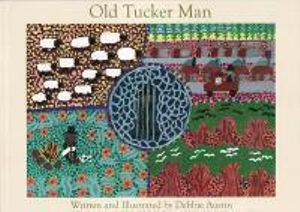This story has an historical basis in a story told by Banjo Clarke, an elder of the Kirrae Whurrong people, to author-illustrator, Debbie Austin, of the Kirrae Shurrong nation in western Victoria. Previously the Kirrae Whurrong Aboriginal people living there hunted kangaroos and emus while the women harvested fruits and vegetables to feed their people. With the arrival of the Europeans and their sheep and cattle to the 12 Apostles coastline to the lakes of the Volcanic Plains, now South Western Victoria, use of the land changed. This story is about the impact of new arrivals to Australia.
The lavishly coloured and arresting artworks fill the double page spreads. The illustrations are highly detailed, ‘bleeding’ to the margins of each double page spread with myriad details about the land, Unc and his family’s life, and similarly the life of the settlers. These illustrations capture in detail the lives of both the Aboriginal people and the settlers who came to occupy this land. A brief four-line text appears on every right-hand page, enclosed within a sheep shape, a symbolic part of this story. ’Unc’ lives in a bark hut across from the river where the sheep farmer has a lot of sheep. Unc’s family is hungry and Unc notes the sheep farmer has a source of tucker. Unc decides to kill one of the sheep with his waddy to feed his family. The farmer notices his missing sheep and reports this to the police. Hiding in the bushes, the police catch Unc as he again takes one of the sheep. He is put in gaol. Unc continues to take sheep and is returned to Warrnambook Gaol time and time again for taking sheep to feed his family. The story goes no further, leaving the reader to understand neither Unc nor the sheep farmer come to a conciliatory understanding.
The open ending of this story provokes discuss with children about the rights of farmers to take lands previously occupied by Aboriginal people. Is Unc entitled to take the farmer’s sheep? Is the sheep farmer entitled to settle the land occupied by Unc and his family? Who and what is ‘right’ and ‘wrong’ in such a situation? Might there have been another outcome?
The words ‘tucker’ and ‘waddy’ are defined at the back of the book. The author-illustrator, Debbie Austin, is an Aboriginal artist who was taken from her mother at 18 months of age by the police and reared by a foster family.

